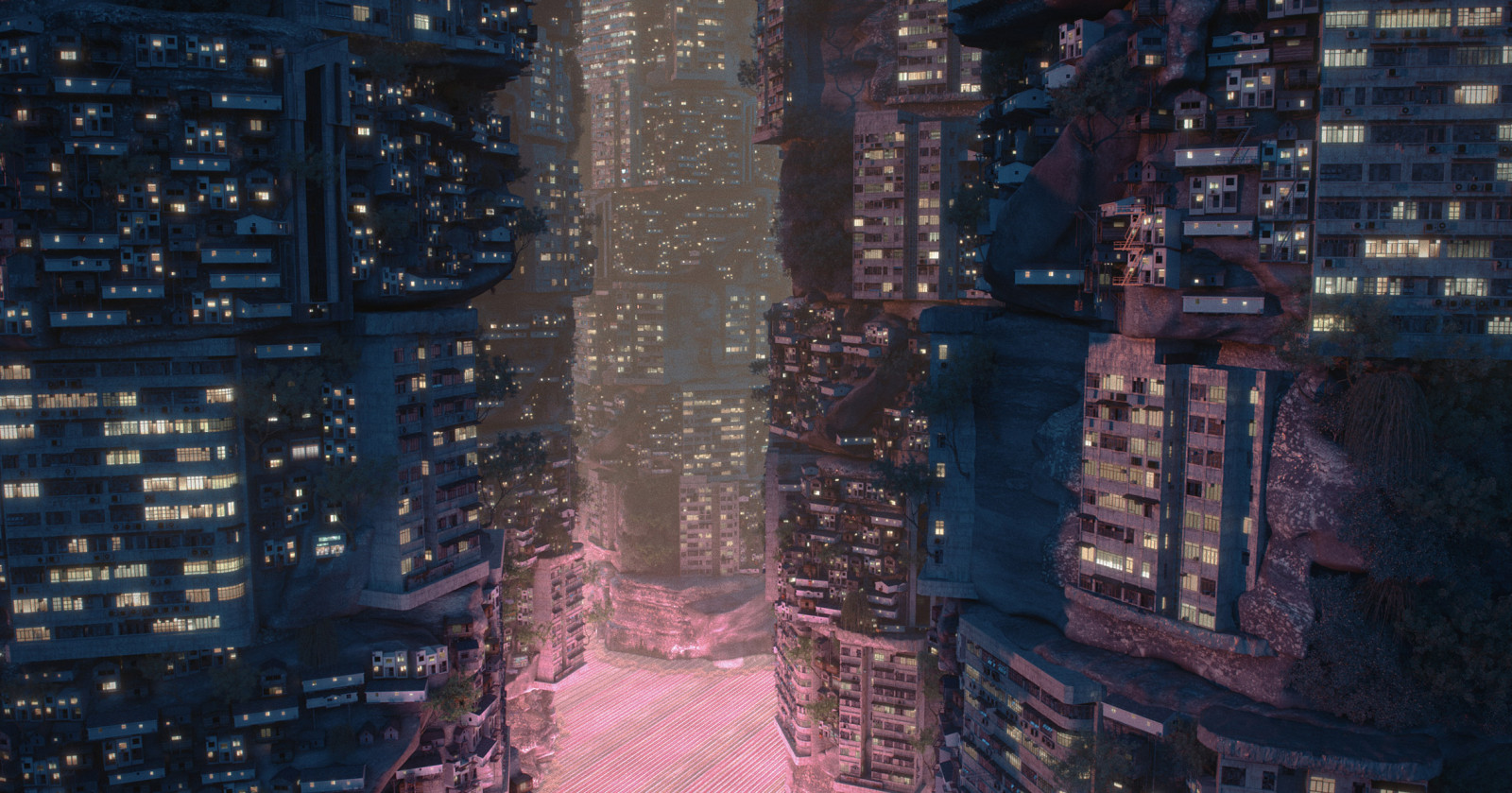
Ten Billion People in a Single Metropolis. See the “Planet City” Project08.01.2021
The man behind the film, Australian architect Liam Young, wanted the animated short to call attention to the most pressing problems of the 21st century, including globalization, overpopulation, and the climate crisis.
Sprawling over 221,000 square kilometers, a little over 70% of the total area of Poland, the city would comprise buildings up to 165 stories tall and carrying 50 billion solar panels, while its streets would be home to 4.3 billion bicycles. That’s the vision for Planet City—a fictional future metropolis conjured by Australian architect Liam Young, which the designer believes would be home to over ten billion people, a number estimates say the human population of Earth will reach in 2050.
"Planet City is a speculative narrative of what could happen if we were to radically reverse this planetary sprawl,” Young explains in an interview with Dezeen. "What if we reached a global consensus to retreat from our vast network of cities and entangled supply chains into one hyper-dense metropolis housing the entire population of the earth? If we were to reorganize our world at the scale of our densest cities then Planet City could actually occupy as little as 0.02 per cent of the earth, roughly the size of an average US state,” he adds.

The proposal put forward by the Australian, who describes himself as a speculative architect, centers the variety of problems plaguing mankind in the Anthropocene era, including pervasive globalization, overpopulation, and the climate crisis brought on by unbridled industrial development. "It is a microcosm of the planet that will afford us the space to rewild and return almost the entirety of the world to a global-scaled wilderness,” Young explains.

Young’s sweeping vision is meticulously detailed, on both the visual as well as theoretical and technological levels. The architect presumes that Planet City would function as a closed-loop, with “residential mountains” constructed from recycled materials and food provided by indoor megafarms and vertical orchards. Such an arrangement would prevent the city from generating any undue waste.
Straddling utopia, art, and socioeconomic visions of the future, Planet City is definitely not the first idea to tread similar ground. Last year, the renowned Scandinavian architect Bjarke Ingels revealed his Masterplanet project, which he believed would offer a holistic approach to solving a number of environmental problems, while in 2016, the celebrated biologist Edward O. Wilson unveiled his Half Earth Project, which posited that dedicating half of the planet to nature could potentially halt the loss of biodiversity and stave off the degradation of the environment.
see also
- A Spacefaring Garbage Truck Launched to Clean Up Earth Orbit

News
A Spacefaring Garbage Truck Launched to Clean Up Earth Orbit
- Olga Chernykh: Jigsaw puzzles of directing
 Papaya Young Directors
Papaya Young DirectorsPeople
Olga Chernykh: Jigsaw puzzles of directing
- What’s the Proper Way to Wash Your Hands? Foals Lend Song to Public Awareness Campaign
News
What’s the Proper Way to Wash Your Hands? Foals Lend Song to Public Awareness Campaign
- Altitude Warning. Vlogger Who Crashed Plane for Views Stripped of Pilot’s License

News
Altitude Warning. Vlogger Who Crashed Plane for Views Stripped of Pilot’s License
discover playlists
-
Papaya Young Directors top 15
 15
15Papaya Young Directors top 15
-
Martin Scorsese
 03
03Martin Scorsese
-
Papaya Young Directors 6 #pydmastertalks
 16
16Papaya Young Directors 6 #pydmastertalks
-
Animacje krótkometrażowe ubiegające się o Oscara
 28
28Animacje krótkometrażowe ubiegające się o Oscara
